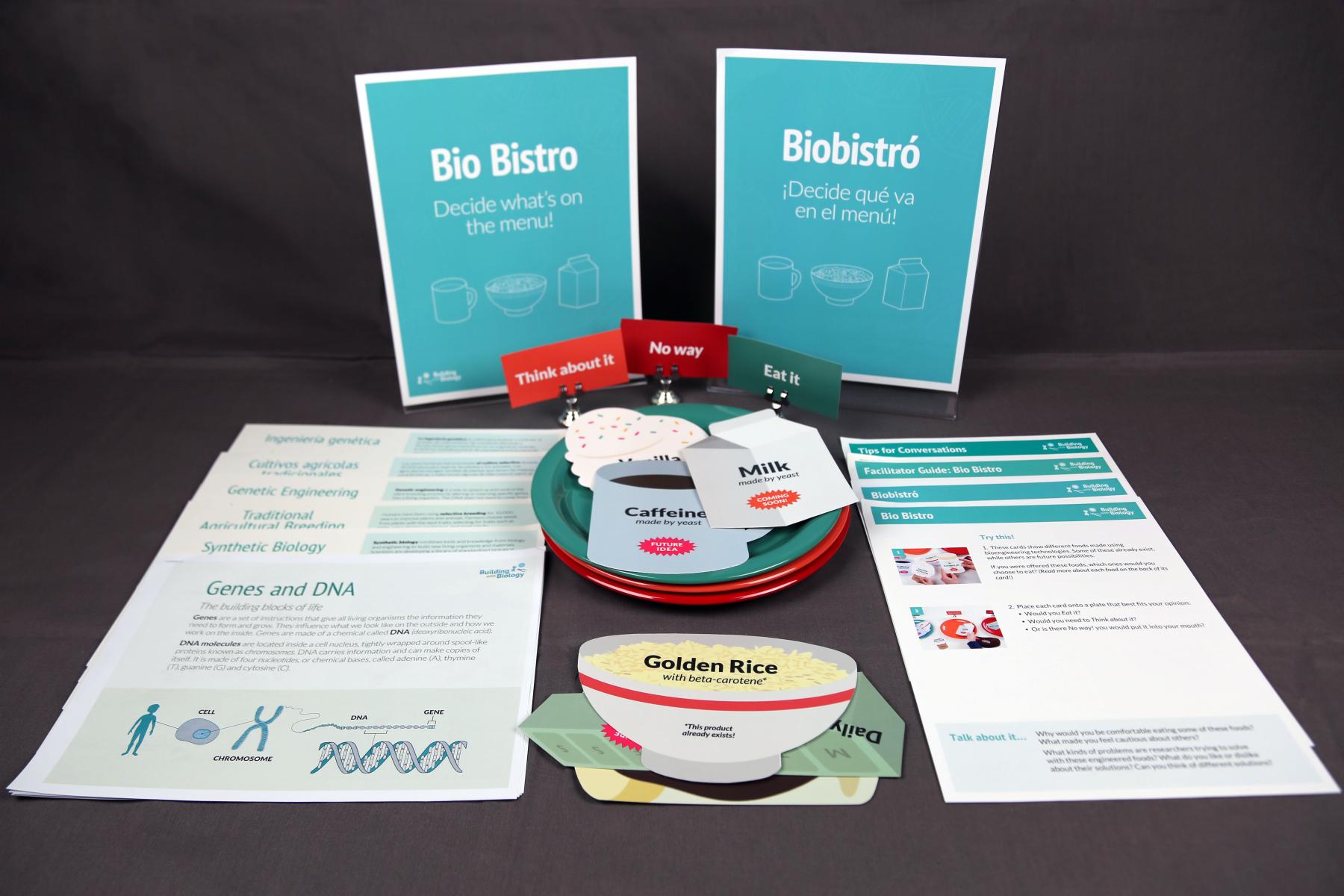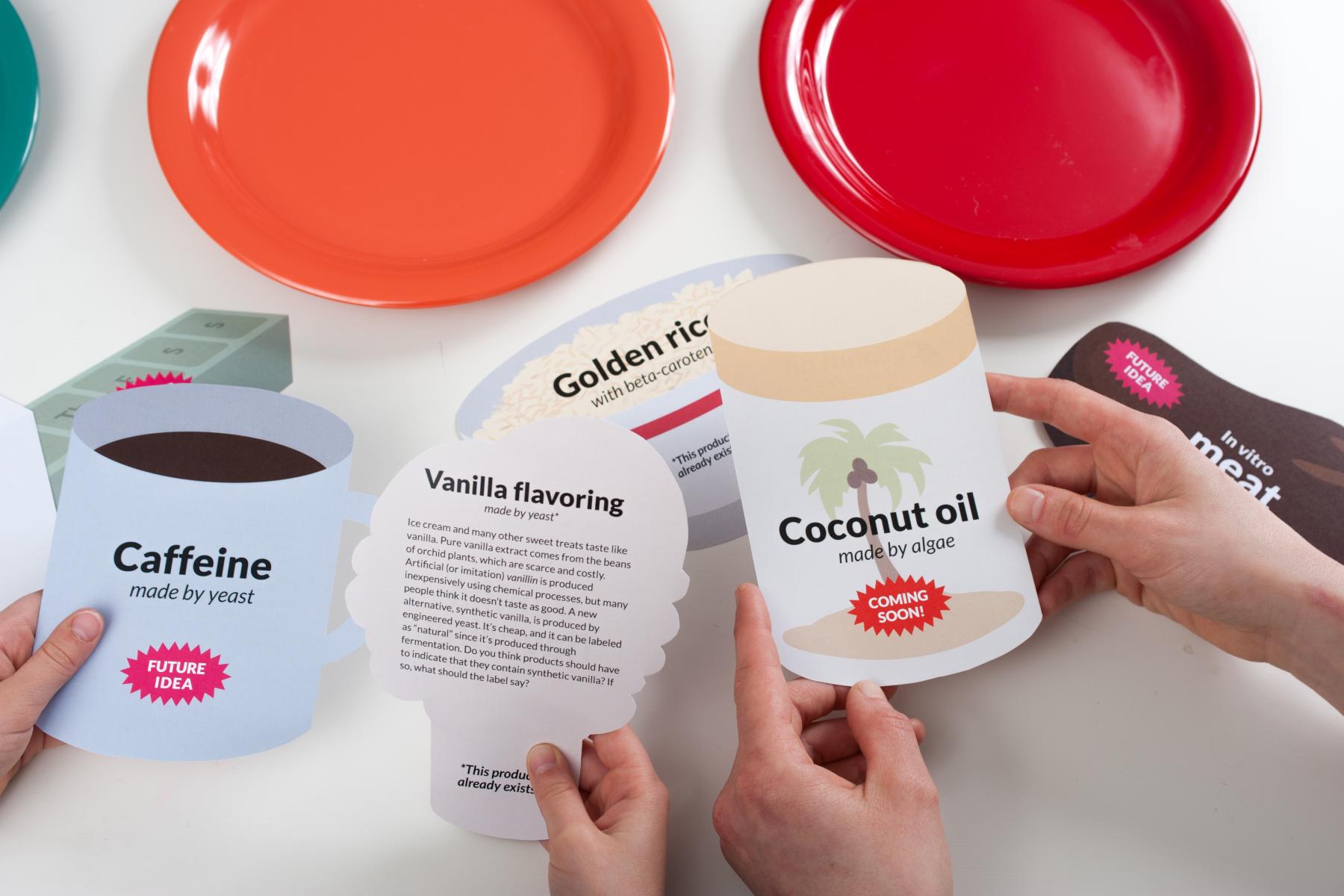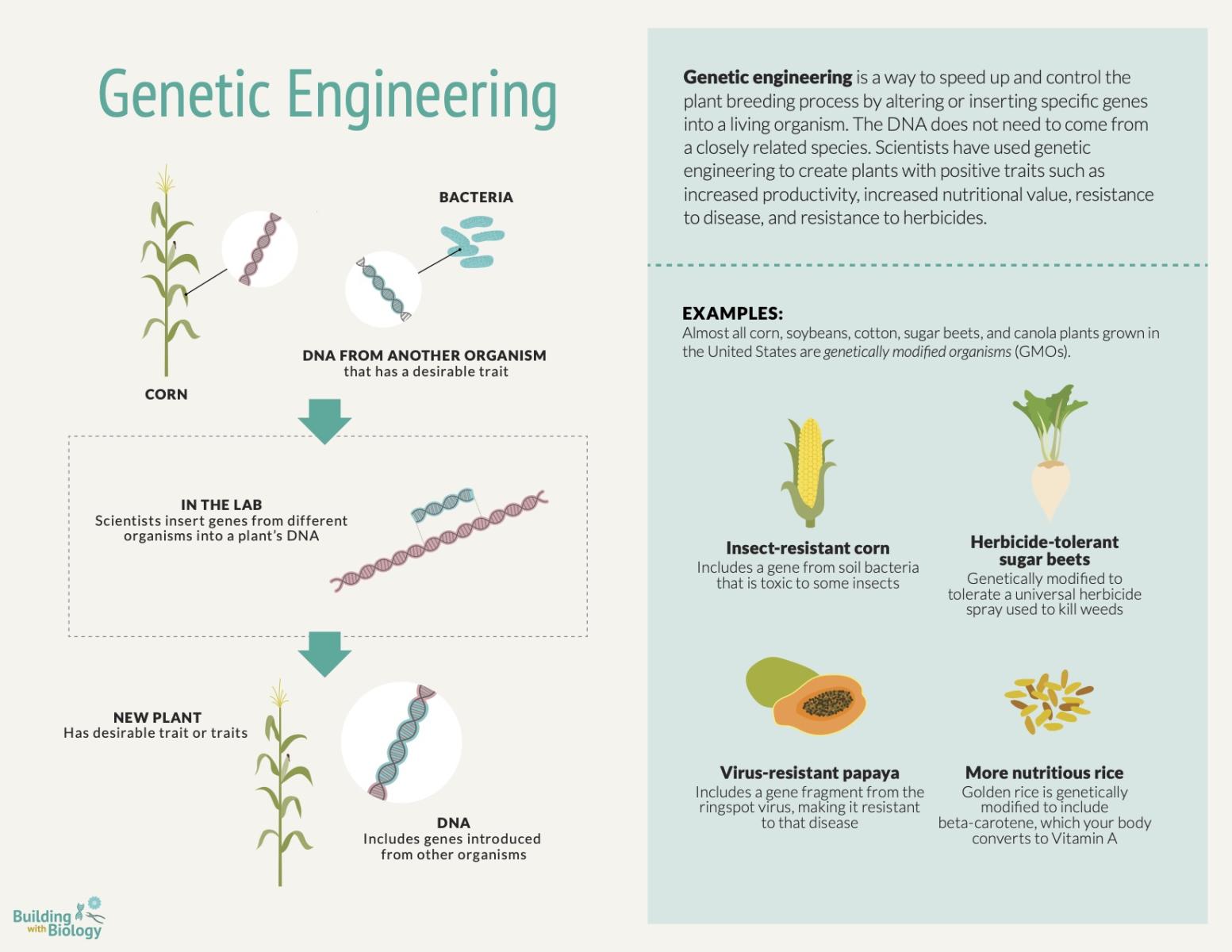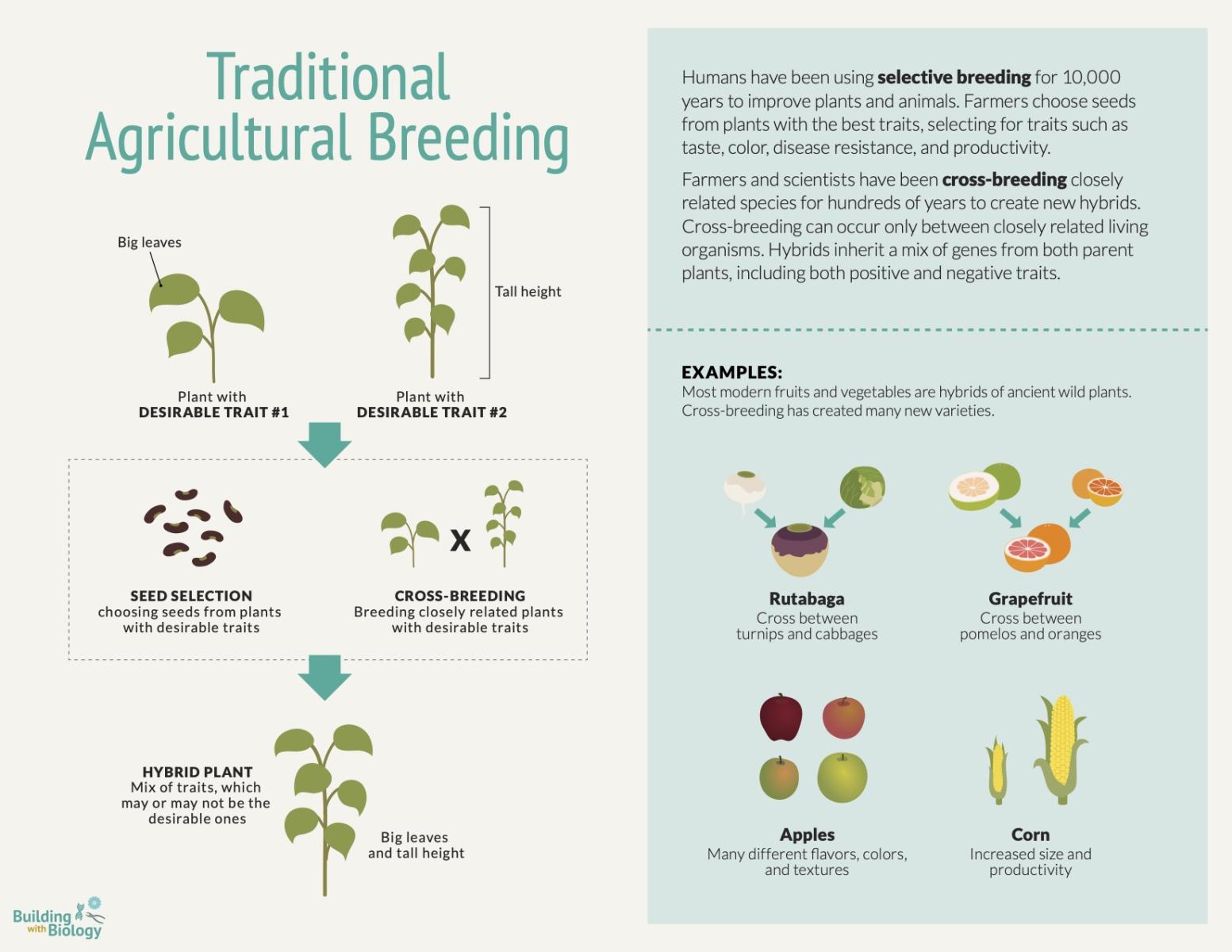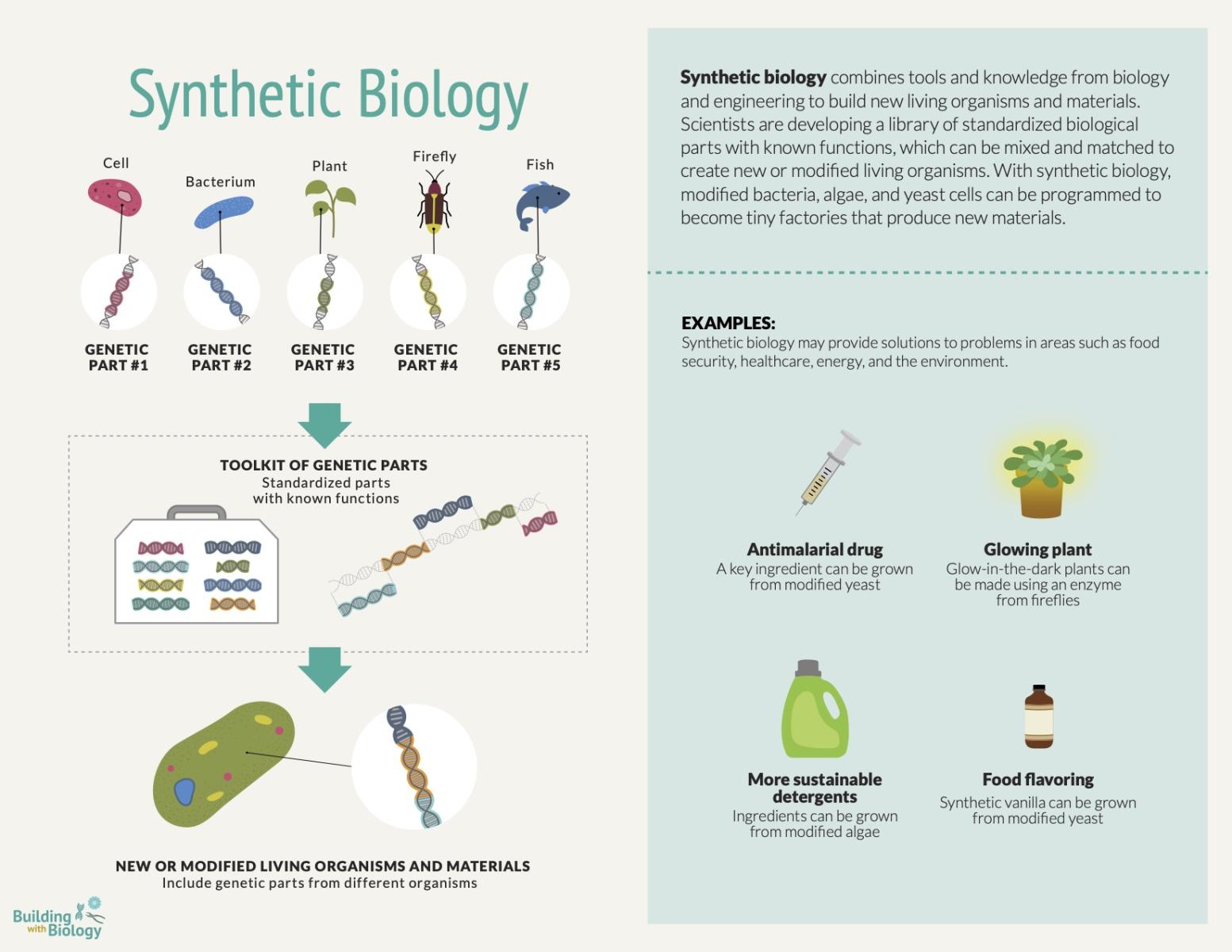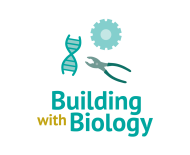DESCRIPTION
"Bio Bistro" is a card-based personal choice activity, in which visitors decide what current and future synthetic biology-based food products they would, would not, or might eat. They share their opinions on why they made each choice, and discuss what problems researchers are trying to solve with these foods, and what they like or don't like about these solutions.
Includes reference sheets comparing genetic engineering, traditional breeding, and synthetic biology.
DESCRIPTION
"Bio Bistro" is a card-based personal choice activity, in which visitors decide what current and future synthetic biology-based food products they would, would not, or might eat. They share their opinions on why they made each choice, and discuss what problems researchers are trying to solve with these foods, and what they like or don't like about these solutions.
Includes reference sheets comparing genetic engineering, traditional breeding, and synthetic biology.
TRAINING VIDEOS
OBJECTIVES
BIG IDEA
Synthetic biology is interconnected with society.
LEARNING GOALS
Synthetic biologists solve problems by applying engineering principles to living materials.
We all have a role in shaping the development and use of new technologies.
Synthetic biology may provide solutions to problems in areas such as food security, healthcare, energy, and the environment.
DOWNLOAD FILES
- Bio Bistro - activity guide (docx)
- Bio Bistro - activity guide (pdf)
- Bio Bistro - cards and labels (pdf)
- Bio Bistro - facilitator guide (docx)
- Bio Bistro - facilitator guide (pdf)
- Bio Bistro - sign (pdf)
- Bio Bistro - genetic engineering reference sheet (pdf)
- Bio Bistro - synthetic biology reference sheet (pdf)
- Bio Bistro - traditional agricultural breeding reference sheet (pdf)
- Bio Bistro - kit materials (jpg)
- Genes and DNA reference sheet (PDF)
- Genes and DNA reference sheet (Spanish) (PDF)
- Bio Bistro - activity guide (Spanish docx)
- Bio Bistro - activity guide (Spanish pdf)
- Bio Bistro - cards and labels (Spanish pdf)
- Bio Bistro - sign (Spanish pdf)
- Bio Bistro - genetic engineering reference sheet (Spanish pdf)
- Bio Bistro - synthetic biology reference sheet (Spanish pdf)
- Bio Bistro - traditional agricultural breeding reference sheet (Spanish pdf)
Credits
Science Museum of Minnesota, Saint Paul, Minnesota/ Museum of Science, Boston
This material is based upon work supported by the National Science Foundation under Grant Number DRL 1421179. Any opinions, findings, and conclusions expressed in this material are those of the authors and do not necessarily reflect the views of the National Science Foundation.
Creative Commons Attribution Non-Commercial Share Alike 3.0 United States (CC BY-NC-SA 3.0 US).
View more details

NISE Network products are developed through an iterative collaborative process that includes scientific review, peer review, and visitor evaluation in accordance with an inclusive audiences approach. Products are designed to be easily edited and adapted for different audiences under a Creative Commons Attribution Non-Commercial Share Alike license. To learn more, visit our Development Process page.

